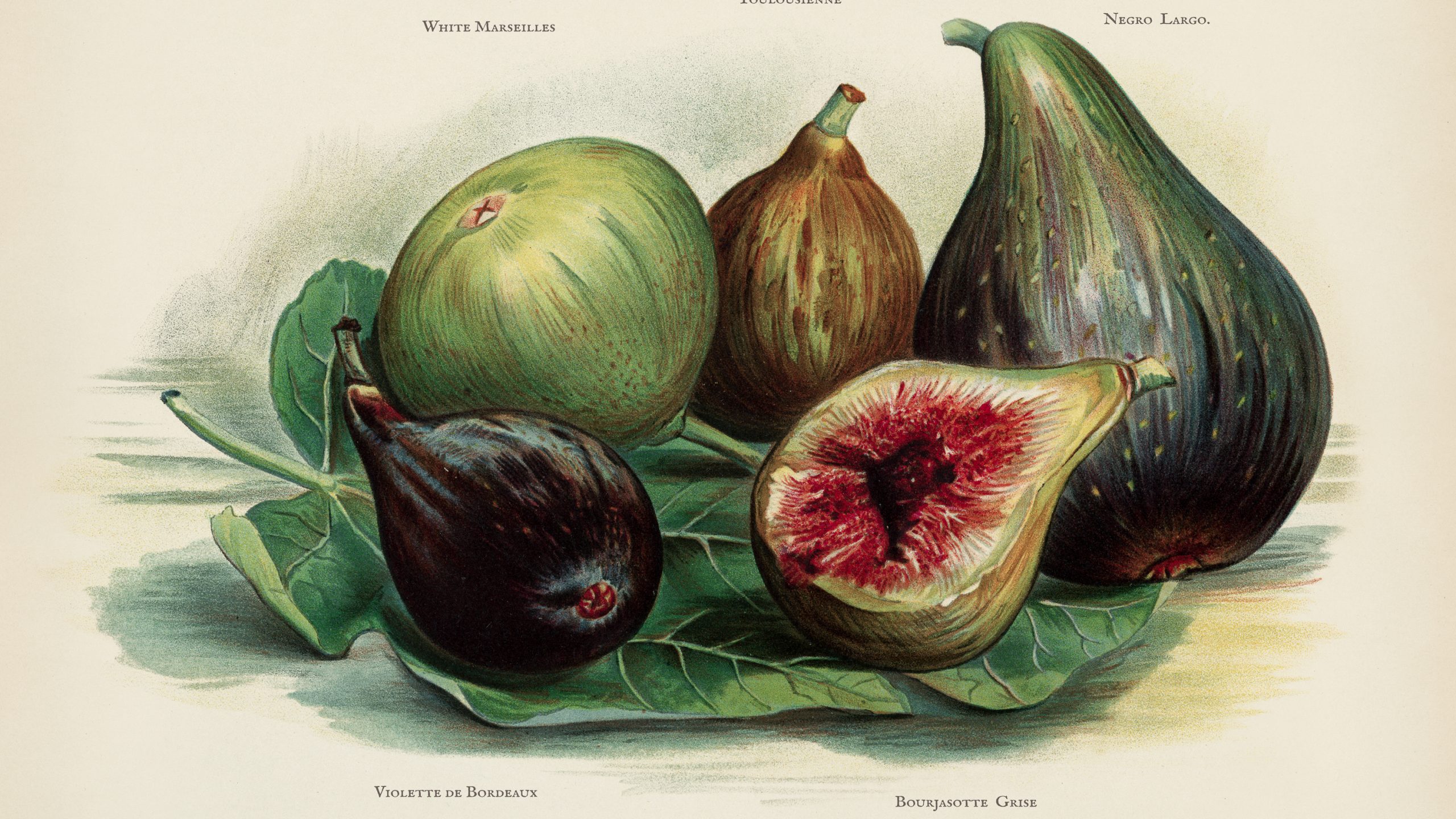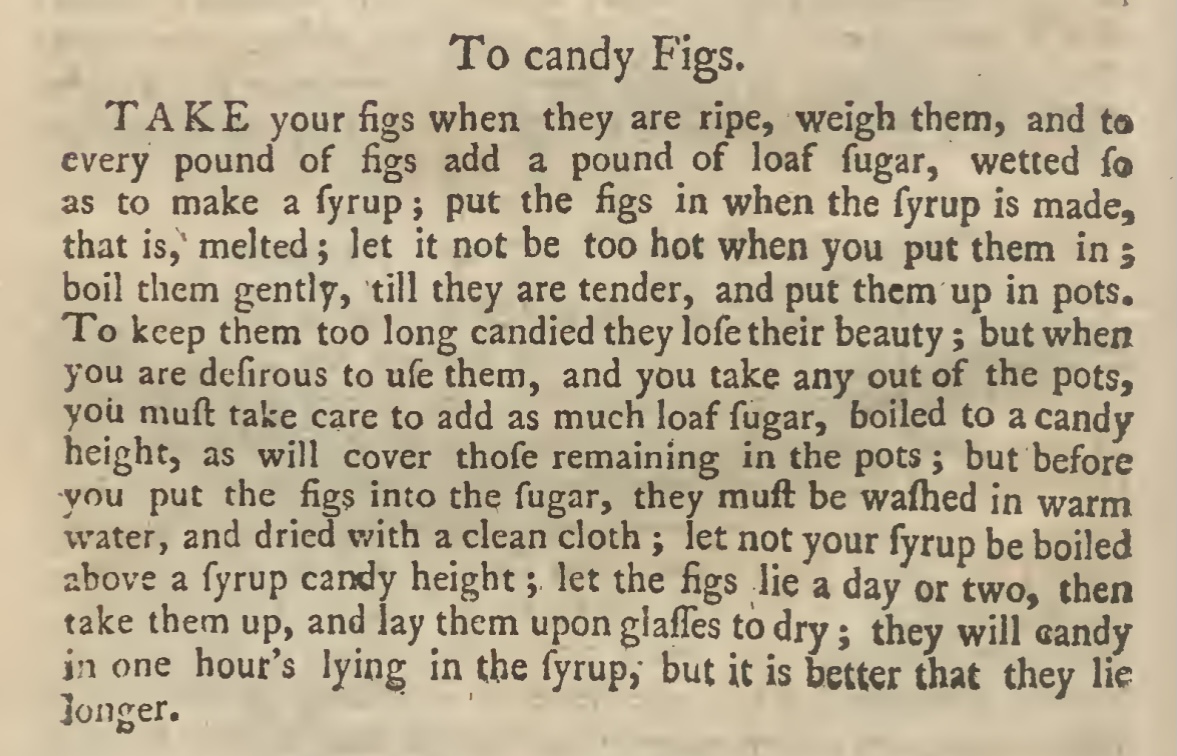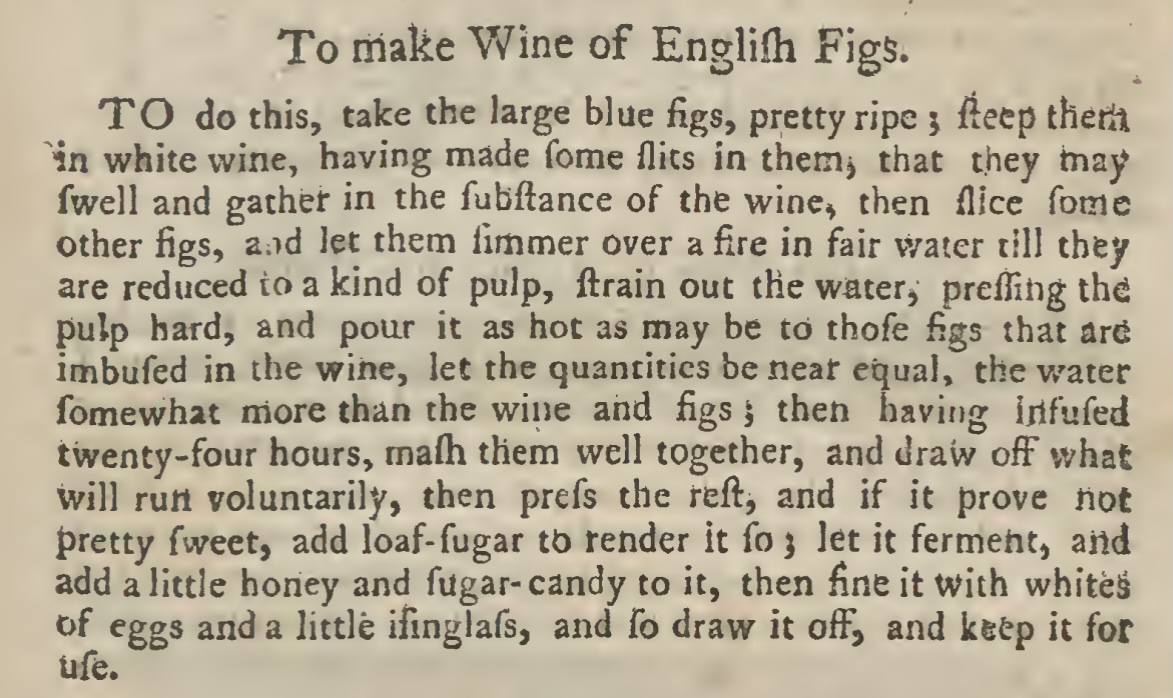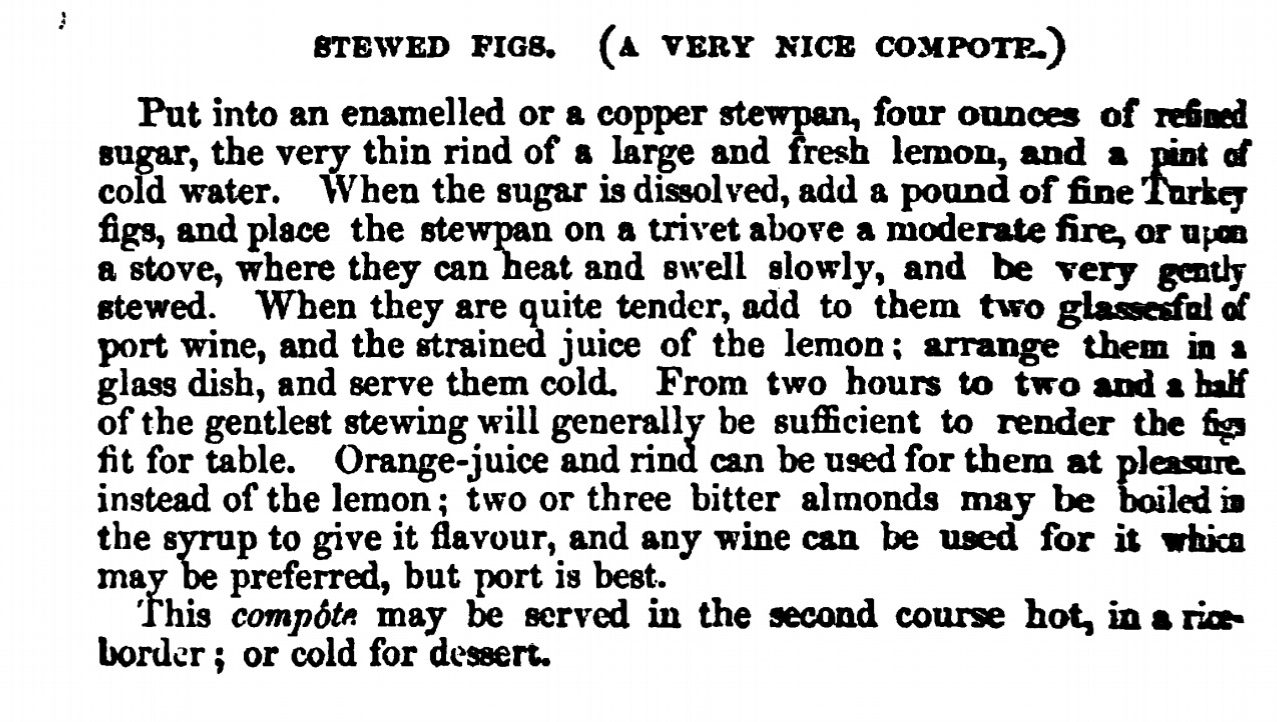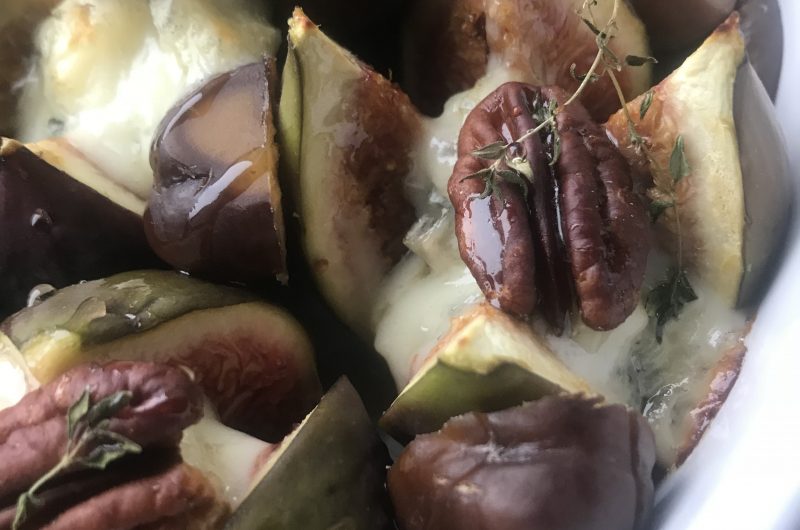In which we discover that you shouldn’t ask questions if you don’t want the answer, a shared love of food is an excellent foundation for a relationship, figs can definitely surprise you and you can fit quite a lot in a candlestick.
In which we discover that you shouldn’t ask questions if you don’t want the answer, a shared love of food is an excellent foundation for a relationship, figs can definitely surprise you and you can fit quite a lot in a candlestick.
The story in this episode is ‘Dear as Salt’, an Italian folktale with a vain and arrogant king, 3 princesses, 1 prince, 2 clever queens, an inheritance battle and a giant silver candlestick. There are also adventures, delicious banquets, food theft, a wedding, jewels, excellent advice and finally an apology.
The episode recipe is Baked Figs with Gorgonzola, Walnuts & Honey Sauce
There is also extended fig folklore, fig history, fig based ecosystems and historic fig based healing remedies. If you want to know more about anything discussed on this podcast you can visit the Episode web page or visit Further Reading.
You can also find out more at Hestia’s Kitchen which has all past episodes and the connected recipes on the blog. If you’d like to get in touch about the podcast you can find me on Twitter or Instagram at @FairyTalesFood
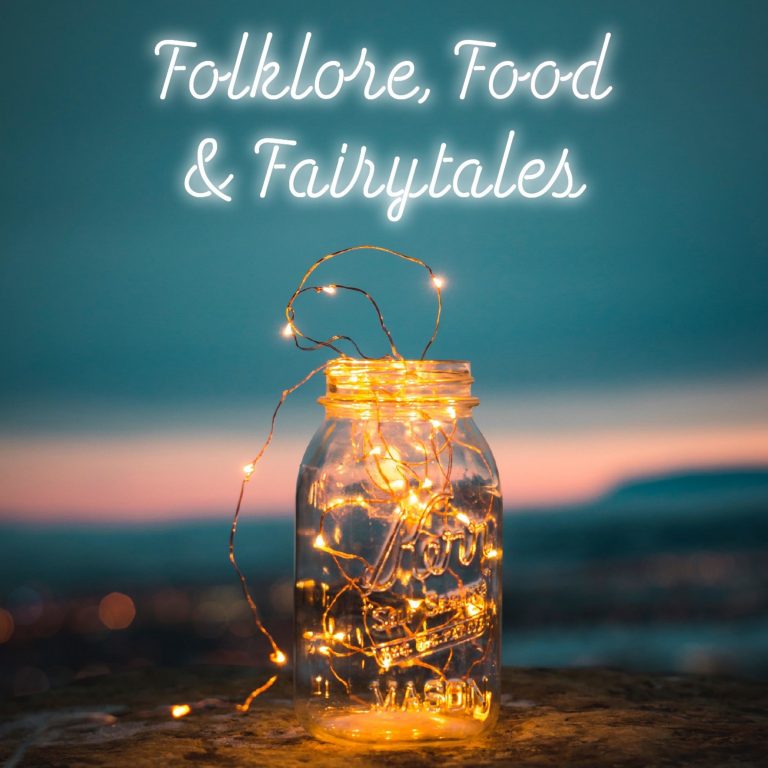
What did you think of that story? I have stayed in Italy for another episode but the themes in this story and its variants appear worldwide. My tale is based on a tale told to Carolina Coronedi-Berti in Bologna in the province of Emilia Romagna. It was translated by Maria Roalfe Cox in her book about 345 variants of Cinderella. It also appears in Italo Calvino’s Italian folktales. Calvino’s emphasis on the jealousy of the heroine’s sisters doesn’t appear in the earlier versions I mentioned although he does an excellent job of exhibiting the ridiculousness of the king.
Whose Story Are We Hearing?
The change in emphasis however is an interesting thing to explore from a gender perspective. As Jack Zipes discusses in his ‘The Irresistible Fairy Tale’ we don’t know whether the emphasis appeared in the original telling from a woman, in the transcribing of dialect by a woman, in the translation by a woman or in the interpretation by a man. As all of these persons are not around to ask we may never know. Although there were many women collecting tales at the same time as the more famous men, with some notable exceptions nowhere near as much investigation has gone into their collections.
Its a Double Meaning
The reason that Italo Calvino chose this variant when there at least three other versions of this folktale in Italy, is that in the Bolognese dialect the word love is used in the sense of flavour as well in the traditional sense of love so there is a double meaning. This appealed to me as well as that specific foods were mentioned as supplies for Zizola in the candlestick. We’ll get back to that shortly but I’d like to look at some of the other variants of this story.
To Be or Not to Be?
Even if you never read folktales or fairytales you might well recognise the start of this story as it appears as the start of Shakespeare’s King Lear. Cordelia is Zizola and her jealous elder sisters are Zizola’s sisters. It may well be that the jealousy of Zizola’s sisters in Calvino’s version is taken from here as I mentioned there is no trace of it in the original text as it was collected. There are at least another three versions in Italy alone, one Venetian, one Roman and one Sicilian. There is an Indian variant, a Pakistani variant, at least two from England, at least two from Germany, one from Austria, two from France, three from Belgium, four from Spain, one from Slovakia and one from Hungary.
‘Love like Salt’ carries the ATU number 923 and is generally the story of a father who tests his daughters as we have heard today but with different accessories. This Italian one definitely has a food connection over and above all the variants which contain at least one meal which contains no salt. This is familiar from our last episode as food imagery is very common in Italian folk tales. There is sometimes an even darker side to this tale as in some variants the king orders that his daughter be put to death.
Donkeyskin?
This tale type is often combined with ATU number 510B known as ‘Donkeyskin’ where the heroine gets work at another palace or home underneath a all-enveloping disguise and bewitches the eldest or only son of the house by attending three balls without the disguise. She takes his ring at the end of the last ball and disappears. The son then fades away from love-sickness and the princess hides the ring in a dish which she has made in her disguised form. The son sees the ring, immediately insists on the maker appearing in front of him. The disguise is then removed, the son gets immediately better and they marry and live happily ever after. The final scene of the meal without salt then occurs in one format or another.
Dancing with a prince or nobleman at three balls and disappearing in the Donkeyskin tale type is where there is the crossover with the Cinderella tale type (ATU 510A) occurs, in case you were wondering how our tale appeared in a book about Cinderella variants. Love Like Salt is an old tale type with the earliest documented appearances in Geoffrey of Monmouth’s Historia Regum Britanniae from the 12th century.
Definitely Not Cinderella
Our tale is a straightforward ATU923, if hiding a whole woman in a candlestick with room for snacks can be considered straightforward. I’m prepared to enter into discussion with anyone who would like to argue that the candlestick is her disguise and the stolen meals are the balls in other stories but I still think I’m right. There is a French fairytale which also has the princess hidden in the candlestick but there is a lot more escaping incest and death by nettles in that one and not even a mention of salt so I think we can safely say it does not belong to ATU 923.
An Impromptu Feast
I think I should make a confession before we start to look at the food in this story, I might have added some of the food. In my defence the ‘love you as much as bread’ and ‘love you as much as wine’ are borrowed from the Rome variant. The description of the feast of traditional Bolognese foods was all my own though but it really wasn’t my fault it was the king’s. He had crept into my head as this rich, foolish arrogant man who wanted to be seen as the sort of man who feasted on the best dishes every night. Also if food wasn’t important to him why would lack of seasoning be so important at the end of the tale?
I had the best time imagining and designing that feast and the story felt better for it so I feel no shame for the addition. The figs, chocolate and biscuits though appear in the original Bolognese tale, I definitely had no hand in them. So it needed to be one of those three products that we discussed in this episode. I chose figs, partly because I love them but mostly because of the sheer volumes of folklore and myth that has been written about them and their trees. They are also interesting from a purely food history perspective.
Figs: the Way to Bigger Brains
So figs, delicious and very nutrition rich, they are one of the foods that would have helped to sustain our human ancestors. They produce fruit all year round to ensure pollination by the fig wasp so would have been and ideal source of nutrition and energy to help us develop bigger brains. Its not just humans, it turn out that a lot of species of animals and birds eat figs, more than 1200 species in fact. They are fascinating. I even ended up buying a book by Mike Shanahan called Ladders to Heaven to find out more. He discusses how fig trees are keystones in their environments and if they are removed, the rest of those local ecosystems could come crashing down as a building would if you removed its keystone. If you want to know more then follow the link in further reading, I’d heartily recommend it.
Enter Here for Myth & Folklore
However I promised you folklore and myth so strap in. Did you know there is a Banyan Tree in Andhra Pradesh that can shelter 20,000 people? It is said to have sprung up in the exact same spot that a widow threw herself on her husband’s burning funeral pyre. The ancient Greeks credit the goddess of fertility, Demeter with origin of figs. They believe that she gave figs to humanity to repay the hospitality of a king after he gave her shelter whilst she tried to find her daughter Persephone who had been kidnapped by the god of the underworld. Well some of them do anyway, others insist it was Dionysus, the greek god of wine who found the first fig tree.
It wasn’t just the Greeks either. The Persian deity Mithra was believed to have been born from a rock beneath a sacred fig tree. The tree sheltered him and provided him with clothing from its leaves and food from its fruit. The leaves also had a starring role in the Garden of Eden even if the jury is still out on whether the troublesome fruit was an apple, a fig or a pomegranate. All three of the largest Abrahamic religions do agree though that the fig tree was part of the story of humanity from the every beginning and In Buddhism, the fig tree is a symbol of enlightenment.
There is also a origin story in Indonesia that the first couple were formed from a fig tree by the gods. In Hong Kong it was believed that fig trees are home to spirits and on Borneo several of the indigenous peoples believe that that spirits dwell in the roots of strangler figs. The wolf that suckled Romulus and Remus sheltered under a fig tree, making them sacred to the Romans. Figs were also considered an antidote to poison. I could go on at length but we still need to look at figs in medicine and food so I’ll move on. I have one last thing before I do, in case you are interested in etymology just try looking up the origin of sycophant.
Interesting Remedies
There was a crossover of food and medicine in historic cookbooks and I have some recipes for remedies which you might find interesting. There are however there is some even older evidence that figs were used for healing. In the Bible King Hezekiah was apparently brought back from the brink of death caused by a plague of boil by a paste of figs smeared on his skin. Spots were apparently treated by using the juice freshly squeezed from a fig leaf/ Fig milk (or sap) was also commonly prescribed for ringworm, skin irritations, warts, and insect bites. Modern tests have shown that compounds in the fig leaves and bark are effective against bacteria, parasites and tumours.
This make sense of some of the remedies from historic cookbooks for poultices for tumours, coughs settled on the stomach and a cure for a gentleman who was waste with a consumption although as these used the fruits rather than the leaves and bark maybe not so much. Figs were also used in various home remedies like this one to ’take stains out Mourning Dresses – boil a handful of fig leaves in two quarts of water, till reduced to a pint. Strain and apply this with a sponge.’ From the Cook & Housewives Manual by Mistress Margaret Dods. The note next to it simply reads ‘doubtful’ so it seems that you can’t use figs to cure everything!
Fygey
Figs were popular in Medieval English cooking and appear in 13 recipes in Forme of Cury in 1390. This recipe for Fygey from Douce MS. 257 sounds delicious (very loosely translated): take figs and boil them in wine and pound them in a mortar with breadcrumbs, temper it up with good wine, boil it, add plenty of spices and raisins. Plate it up and garnish with pomegranate seeds’ They were one of the few fruits of which there is evidence at all the selected archeological sites pre 1500 as identified in the chapter The Archaeology of Medieval Plant Foods from Food in Medieval England (see further reading).
They appear in early Tudor cookbooks including the Good Huswifes Jewell and the Accomplisht Cook and The English Huswife. They do seem to be less popular as they approach modern times though. There are fewer recipes for them that are not medicinal although E Smith rescues us with some delicious sounding recipes for candied figs and fig wine. They do appear in the lists of seasonal fruits in many books but once we have reached Eliza Acton in 1860 the best things we can manage is a compote of figs.
A Lost Fig Roll Opportunity
It has suddenly occurred to me that whilst Zizolla had both biscuits and figs with her in her candlestick I could have written all about fig biscuits which I love but then I realised there isn’t that much to write. If you are under the age of 35 you probably have no knowledge of this beautifully understated squidgy biscuit which apparently you can make at home. I never have, I sort of feel that there are some things you should just buy like Marks & Spencer fresh cream chocolate eclairs. Fig rolls don’t feel right without the little cardboard insert and their strange pale biscuity outside. I think I’ve just proved that it was a good idea to stick to writing about figs generally rather than the biscuits.
Figs are excellent on their own, particularly in a lovely warm country where they grow. They lose some of their beauty when they arrive to these cold islands but you can cheer them up with the wonderful things you put with them. I like them with dates and dried apricots on a wonderful cheese board. They are also wonderful in a salad but preferably one where there is a warm element like crispy duck confit or a warm vinaigrette like we were all back in the 1990s. They also work well with something salty like prosciutto di Parma or jamón Iberico as it flatters their flavours and brings out all their wonderful sweetness . I think I have found out the perfect combination, warmth, blue cheese, nuts, honey and vinegar.
A Perfect Combination
Now don’t go anywhere its wonderful, I promise. You need to use a delicate blue like dolcelatte or gorgonzola dolce (same cheese different name) or something with a similar creaminess and delicate blue flavour. The cheese brings out the sweetness of the figs and the figs flatter the cheese softening any harsh notes. The walnuts (pecans also work) add texture and crunch with a bit of earthiness and the touch of honey vinegar sauce just brings everything together.
You can cook this under the grill or in the oven. My grill kept blowing the rcd switch for everything that lives on the kitchen side of my fusebox just before the first lockdown happened so we don’t use that now. I felt that the Covid risk for us and the almost certainly lovely repair person wasn’t worth it just for the sake of toasted cheese especially when I have a Breville panini maker which does nearly everything the grill does anyway. We have had some slightly crispy bottomed frittatas in the meantime but we will prevail. I wouldn’t do this on the bbq as its just too fierce a heat unless its right at the end of the evening and everything has cooled right down.
I can’t believe that I’m writing a recipe card for this but I know some people prefer it and its easier to navigate the page if there is one. I will give a caveat though as there are so many variables, the size of the figs, the ripeness of cheese just to start with so you will probably need to use you own judgement too for this one.
Baked Figs with Gorgonzola & Honey Sauce
4
servings15
minutes15
minutesIngredients
8 Figs
1/2 pack Gorgonzola Dolce or Dolcelatte
8 Walnuts/Pecan Halves
2 tblsp vinegar
2 tblsp clear honey (if you can get a herbally tasting one so much the better)
Directions
- Heat the oven to 200C or put the grill on high
- Put the figs quartered nearly all the way through but still joined at the bottom into an oven proof dish
- If using the grill pop the figs under for 5 minutes and then remove
- Cube the gorgonzola into 8 pieces and place into the middle of the figs and place a walnut/pecan half on top
- Either place under the grill until the cheese has started to melt or put the figs into the oven for 10 minutes and then check (it may need another 5 minutes)
- Whilst the figs are under grill/in oven mix the vinegar and honey together until the honey dissolves
- When the figs are ready and the cheese has melted place on a deep plate and then drizzle over the sauce onto the hot figs
Notes
- You might need more or less cheese depending on the size of the fgs
- You may need more cooking time depending on the size of the figs
- You can add a spring of thyme if you like the flavour
Further Reading
http://www.pitt.edu/~dash/salt.html#busk
https://libraryguides.missouri.edu/c.php?g=1052498&p=7642283
http://medievalcookery.com/etexts.html?Italy
The Irresistible Fairy Tale: The Cultural and Social History of a Genre, Jack Zipes
https://www.greatitalianchefs.com/features/foodie-guide-emilia-romagna
Italian Folktales selected and retold by Italo Calvino
Italian Popular Tales by Thomas Frederick Crane edited and with an introduction by Jack Zipes
Italian Popular Tales by Thomas Frederick Crane
La fola dèl candlir (the story of the candlestick) from Novelle popolari bolognesi by Carolina Coronedi-Berti
Cinderella; three hundred and forty-five variants of Cinderella, Catskin, and Cap o’Rushes, Maria Roalfe Cox
Food in Medieval England, Diet and Nutrition Edited by C. M. Woolgar, D. Serjeantson, AND T. Waldron
Oxford Companion to Food, Alan Davidson, edited by Tom Jaine
https://www.theorganicview.com/environment/figs-an-ancient-fruit-that-is-truly-sustainable/
http://www.bbc.com/earth/story/20170116-the-tree-that-shaped-human-history
Ladders To Heaven By Mike Shanahan
The Good Huswifes Jewell, H Wooley 1596
The Complete Housewife – 1631 G Markham
The Accomplisht Cook – 1660, Robert May
The Complete Housewife or Gentlewoman’s Companion – 1773, E Smith
A New System of Domestic Cookery – 1842, M Rundell
Modern Cookery for Private Families – 1860, Eliza Acton
Cook & Housewives Manual – 1867, Margaret Dods
Featured Image: By May Rivers – https://biodiversitylibrary.org/page/18819543, Public Domain, https://commons.wikimedia.org/w/index.php?curid=64779321

